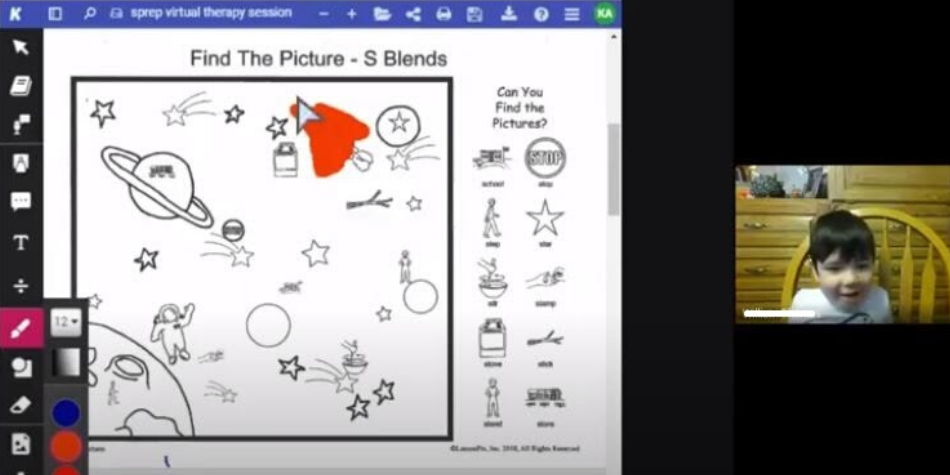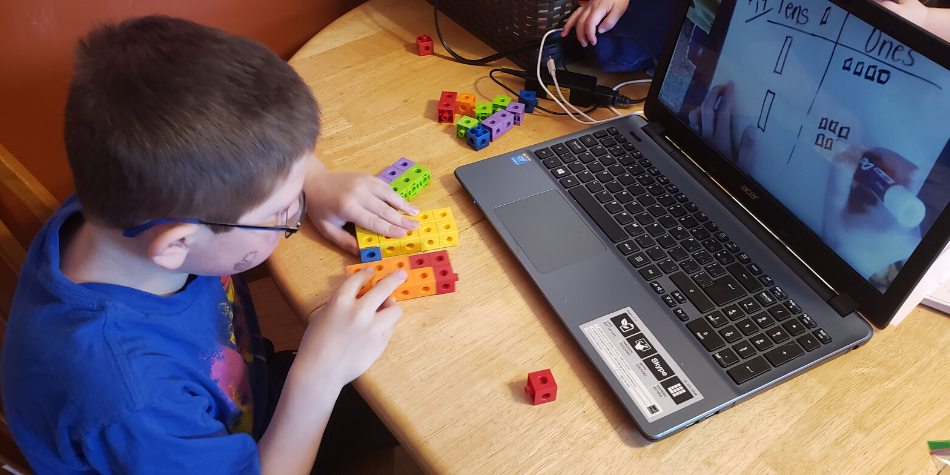Class cancellations and school closures this spring have created a huge challenge for not only our teachers but the support teams who work with students. Pembina Hills has a large team of people who support students with communication and occupational therapy needs—some are employees of Pembina Hills, some are contracted service providers, and others are employed by Alberta Health Services. The team also has several therapy assistants who provide direct treatment for students.
This group has been working together to problem-solve and develop ways to support students who are no longer in school buildings. We contacted Speech Language Pathologists Natasha Madden and Eva Erickson, and Occupational Therapists Taralee Warehime and Kristin Boelman to find out how they and their teams are continuing to provide these crucial supports for students and their families.
What they are noticing is that students are not only maintaining their skills, but are continuing to make gains. This comes as a bit of a surprise, as there was no clear road map for how to do this work from a distance. So how are they doing it?
Focus on connections
One of the biggest reasons for their success is the knowledge that kids need to connect. “They need to see our faces and know that we’re still here. It’s important for kids to be able to talk to us and see us,” says Occupational Therapist Taralee Warehime. “Quite often they are sad when it’s time to end our Google Meet.”
In many cases, students are more focused while on a video call. While the screen may be a bit of a novelty still, it is hooking their interest. No matter their age, kids need to be able to connect and these teams are doing a great job at building fun personalized programs.
One parent commented, “My daughter does speech and language over the computer and enjoys getting to interact with the assistants each week. She loves watching the videos they send and staff have been doing an amazing job with sending challenges to go along with the stories.”
Building relationships with families and parents
We know that a key factor to student success has always been parent involvement. SLP and OT practitioners often don’t have time or the opportunity to sit down with parents and talk. Many parents are actually sitting beside their children during these online sessions, working with them and monitoring their progress. Parents are learning while also building more of a personal relationship with the practitioners and therapists.
Historically SLP and OTs send home reports, but the current scenario brings these relationships to a new level. There may be more opportunity to connect with parents through video sessions in the future. Speech Language Pathologist Natasha Madden says, “The vast majority of parents have been super patient with the technology piece. We’re all in it together, even though it’s been tricky, we’re making it work.”
This parent has a child in an Early Learning program. “The sessions have been really engaging for my son. He enjoys seeing his SLP assistant and learning from her. This new process has also allowed me to participate in his programming and provided me with real-time tips and suggestions to continue his growth.”

Bridging the gap
The ultimate goal for all students is to transition what they learn at school and bring it into their everyday life. Since all the learning is taking place at home right now, they’re developing this bridge. “It’s like a bridge to generalizing skills, when the at-school things come home,” says Speech Language Pathologist Eva Erickson.
“Lots of kids we see are really good at learning things in a certain room in the school with a specific person. If you’re the person they’ve practiced it with, they can often complete the tasks, but when the environment or situation changes, it becomes more challenging. These kids are now learning to practice and master these skills in their everyday life.”
Offering flexible solutions
These teams are working extra hard to adjust the ways in which they connect with students and their families. Where the internet is a barrier, SLPs and OTs check in by phone and provide print material for students. Some have offered flexible times, connecting with families early in the morning or evenings, as needed.
Many families have also reached out for additional support, and these teams have done a great job to offer advice, extra materials or even additional phone calls or sessions. “Our families are reaching out to us and they are grateful for every little bit of help they can get,” said Warehime.
Another parent shared how the team is providing support for her two children. “Speech is going really well for my son. He really enjoys his half hour sessions, and looks forward to seeing his therapy aide. My older son takes part in a speech group with 2-3 other students. Although the occupational therapy has been a little tricker, it seems to be going well.”
Silver linings
While this new way of teaching and learning has brought with it a steep learning curve, there have been some silver linings. In some cases, SLPs and OTs have been able to spend more one-on-one time with students. With travel time eliminated, they’ve even been able to connect with more kids than they would under normal circumstances.
Although they miss the hugs from their students, the people who are part of the SLP and OT teams have done a tremendous job at connecting with and supporting students. We want to acknowledge them as well as the families they are working with—it’s really taken a great deal of effort, flexibility, trail and error to ensure these children get the support they need.

